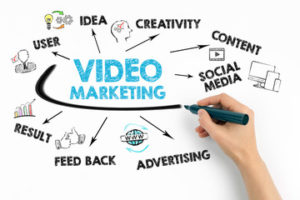
The appropriate usage of technology can turn the bottom line of your business upside down, that is in a good way. It will enhance your revenue multifold and certainly help you achieve your vision. When you are finally ready to implement the chosen technology, you definitely have come a long way. Selecting the right technology for your business is a huge task by itself.
There can be various hassles while implementing a technology solution to your business such as compatibility of the technology with your business, integration time to set up and train your staff, maintenance, and cost involved to implement it. Your implementation strategy should be robust to handle all the aforementioned problems. After considering one too many factors, we have come up with a list of practices that you could adopt for a successful implementation:
- Choose appropriate technology for your business goals: People are often carried away by brand names and seldom look at the product value one has to offer. In this case, it is easy for you to choose a big provider like Oracle, SAP, AWS, etc. But are they appropriate for your business? Does the software match your organisational goals? Well, it actually should. Choose the best software that has features that will accommodate your business structure and needs. Let’s not forget, the goal of implementing a software is to increase efficiency and revenue. The software you want to implement should support that.
- Carry out a systems analysis: We cannot stress over this point enough – you need to carry out a systems analysis of all your systems. The biggest impediment that could arise is when your system is not compatible with the software. The non-compatiblity concern is too big to avoid. All you have to do is analyse your existing systems and choose a software solution that will be compatible with them. This will greatly save your integration time and money, otherwise you might end up with redundancies which will otherwise increase your cost.
- Manage change effectively: When you decide to bring in a new technology you are all ready for a disruptive business and system ecosystem. First of all, weigh in how well you and your people can manage this disruption. Implementing a new technology can only be successful if your people adopt and adapt to it properly. There will still be people who would love to work in their good ol’ traditional paper. So, have a change management team who can handle this for you and help your people adapt to technology, make sure your deployment team and change management team work hand in hand.
- Train your stakeholders early: The technology implementation will go kaput if the users do not have the required knowledge in using it effectively. Your users should be trained thoroughly before you let them start using a software. Today, many vendors provide training as a part of the software package and even for free. So, identify such a vendor who will train your people well. As humans, we take well with demonstrations rather than theoretical training. So, demonstrate the software rather than just telling people on how to use it. Also remember, not everyone will be comfortable with one way of training, take different approaches like hands on training, webinars, classrooms, etc.
- Start collecting reports: Your technology deployment could fail to achieve what it was deployed for in the longer run. Your main idea to deploy software could be to increase efficiency, accuracy, and reduce cost. It is imperative to collect data and reports to analyse how well the technology is being used and if your criteria for the software are met. Is your productivity going up? Does cost-cutting really happen? All these can only happen when you analyse reports.
- Assess the process regularly: Introducing a new technology will definitely have a huge impact on the workflow. Meeting deadlines could get onerous, especially when the users are not particularly at ease in using the technology. Talk to your people regularly, get their opinions and concerns. Make sure you address their concerns with regards to the technology. Develop some quantifiable goals and make sure you assess, address concerns for better performance.




